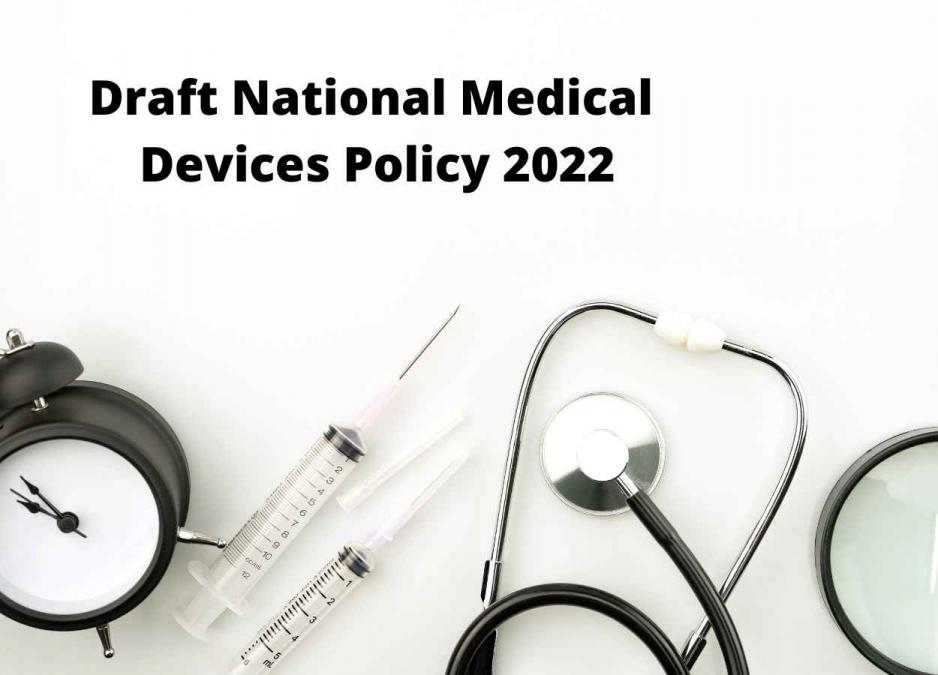Draft National Policy for Medical Devices, 2022

From Current Affairs Notes for UPSC » Editorials & In-depths » This topic
IAS EXPRESS Vs UPSC Prelims 2024: 85+ questions reflected

Context
- The government is proposing a new policy to reduce India’s dependence on the import of high-end medical devices.
What is the need for such a policy?
Reduce India’s dependence on import
- Nearly 80 per cent of the medical devices currently sold in the country are imported, particularly high-end devices.
- Indian players in the space have so far typically focussed on low-cost and low-tech products, like consumables and disposables, leading to a higher value share going to foreign companies.
- With the new policy, the government aims to reduce India’s import dependence from 80 per cent to nearly 30 per cent in the next 10 years, and become one of the top five global manufacturing hubs for medical devices by 2047.
A long-standing demand
- India’s medical devices sector has so far been regulated as per provisions under the Drugs and Cosmetics Act of 1940, and a specific policy on medical devices has been a long-standing demand from the industry.
Per capita spend on medical devices
- The policy also aims to increase India’s per capita spending on medical devices.
- India has one of the lowest per capita spend on medical devices at $3, compared to the global average of per capita consumption of $47, and significantly lower than the per capita consumption of developed nations like the USA at $415 and Germany at $313.
What are the key focus areas of the draft policy?
- The key focus areas of the draft policy include
- Incentivising core technology projects and exports through tax refunds and rebates
- Creating a single-window clearance system for licensing medical devices
- Identifying critical suppliers
- De-risking and de-carbonising the supply chain
- Promoting local sourcing
- Encouraging cross-industry collaboration
- Creating a central pool of vendors and workers
- Establishing a dedicated mechanism for the local industry’s engagements with international regulatory agencies
- Increasing the share of medical technology companies in research and development to around 50 per cent, among other things.
Major proposals of the draft policy
Dedicated fund
- It also proposes to allot a dedicated fund for encouraging joint research involving existing industry players, reputed academic institutions and start-ups.
National Pharmaceutical Pricing Authority
- It will also incorporate a framework for a coherent pricing regulation, to make available quality and effective medical devices to all citizens at affordable prices.
- It shall be strengthened with adequate manpower of suitable expertise to provide effective price regulation balancing patient and industry needs and incorporating innovation and life cycle costs as factors in pricing regulation of medical devices.
A Uniform Code
- The Pharmaceuticals Department will also work with the industry to implement a Uniform Code for Medical Device Marketing Practices (UCMDMP).
Way Forward
- The medical devices sector in India suffers from a considerable cost of manufacturing disability vis-à-vis competing economies, inter alia, on account of lack of
- adequate infrastructure
- domestic supply chain and logistics
- high cost of finance
- inadequate availability of power
- limited design capabilities
- low focus on research and development (R&D) and skill development etc.
- Therefore, there must be sufficient will and proper policies from the government to work on each of these issues for helping the Indian economy earn maximum benefits out of the medical devices sector in India.
Practice Question for Mains
- Elaborate how Draft National Policy for Medical Devices, 2022 promote medical device manufacturing in India? (250 Words, 15 marks)
Referred Sources
If you like this post, please share your feedback in the comments section below so that we will upload more posts like this.

